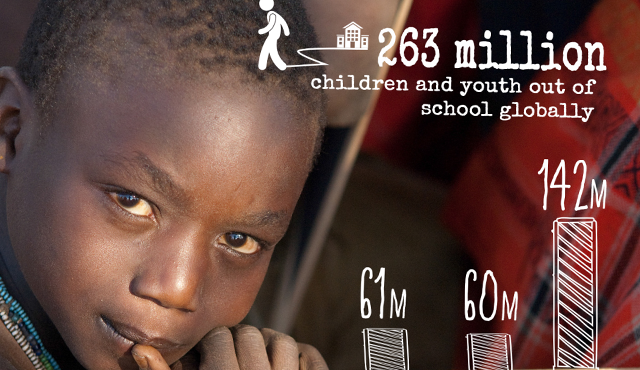By Silvia Montoya, Director of the UNESCO Institute for Statistics, and Aaron Benavot, Director of the Global Education Monitoring Report

With the Eurozone in turmoil and sluggish economic growth in the US and elsewhere, investors may well see sub-Saharan Africa – still one of the fastest growing regional economies on earth – as the new frontier. While the region’s economic growth has slowed, falling from 4.5% in 2014 to 3% in 2015, it continues to outpace growth in many of the world’s most advanced economies. However, as the World Bank has noted, the region faces major economic headwinds, from disparities and poverty to falling commodity price
Today, the UNESCO Institute for Statistics (UIS) adds another headwind to the list: serious challenges in the region’s education. If African economies are to become more competitive, they must be able to draw on a schooled and skilled population. Indeed, the Sustainable Development Goals (SDGs) recognise that the completion of secondary schooling is a minimum to be able to compete in an increasingly globalised economy.
According to new data from the UIS, however, at least half of all those aged 15 to 17 in sub-Saharan Africa are not in school – the highest proportion for any region worldwide. In other words, half of those who should, by now, be fine-tuning the skills they need for the job market, or to progress to tertiary education – to have a lasting impact on their countries’ national development – are not even in the classroom.
It’s not feasible that all of these kids suddenly dropped out of school at the age of 15: the problems probably began much earlier in their lives. As the Director General of UNESCO, Irina Bokova, has said: one reason so many teenagers are out of secondary school worldwide is because they never went to primary school in the first place. In total, more than 93 million children of primary and secondary school age are out of school across the region, and at least 15 million of them will never set foot in a classroom.
The data, released in a new paper from the UIS and the Global Education Monitoring (GEM) Report, show that in Nigeria alone, 8.7 million children who should be in primary school are simply not there. In Sudan, it’s 2.7 million. In Ethiopia: 2.1 million. These are vast numbers that are hard to grasp, but each one represents a massive loss of potential.
The paper confirms that failures to prioritise primary enrolment leave millions of teenagers out of school later on. The out-of-school rate in sub-Saharan Africa is 21% for children of primary school age (about 6-11 years), 34% for youth of lower secondary school age (12-14 years) and 58% for youth of upper secondary school age (15-17 years), according to UIS data.
A closer look at who is out of school and why reveals that girls are at a major disadvantage. Across the region, nine million girls between the ages of about 6 and 11 will never go to school at all, compared to six million boys. Their disadvantage starts early: 23% of girls are out of school compared to 19% of boys are out of primary school. By the time they become adolescents, the exclusion rate for girls is 36% compared to 32% for boys, according to UIS data.
We see that conflict continues to rob millions of their right to education. Across the region, about one-third of all those out of school live in areas plagued by conflict. We also see the severe impact of poverty: only 65 of the poorest children for every 100 of the richest go to primary school in sub-Saharan Africa, according to GEM Report analysis. Once again, girls face the most extreme barriers, with fewer than seven of the poorest girls attending at the upper secondary level for every ten of the poorest boys.
Explore the data with the eAtlas of Out-of-School Children.
Leave a comment